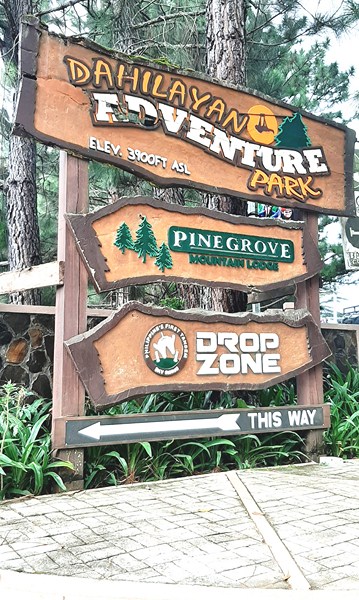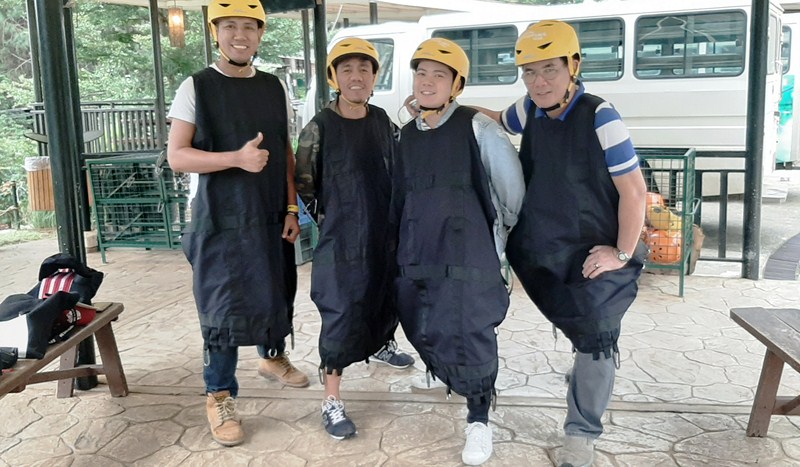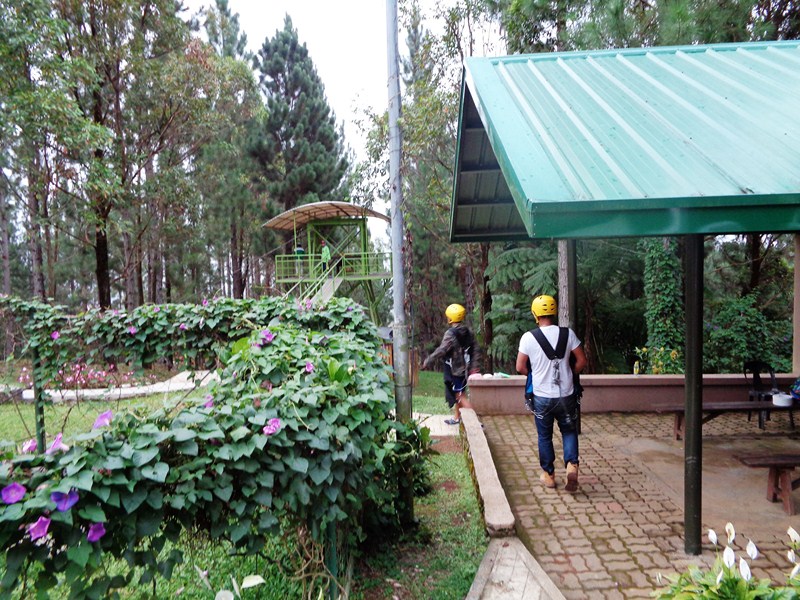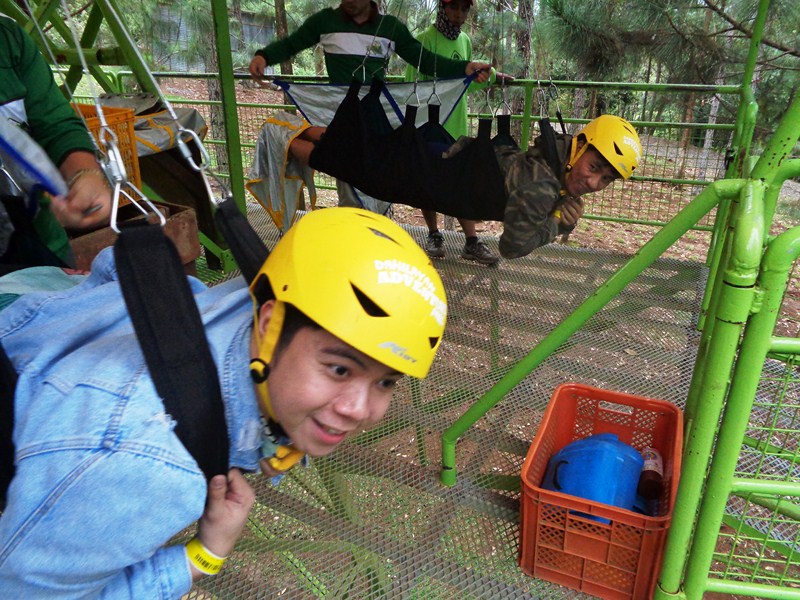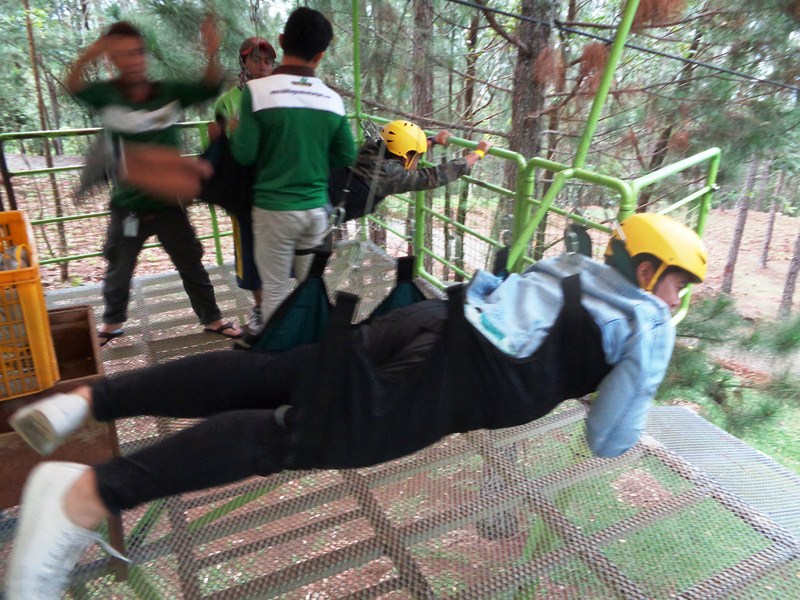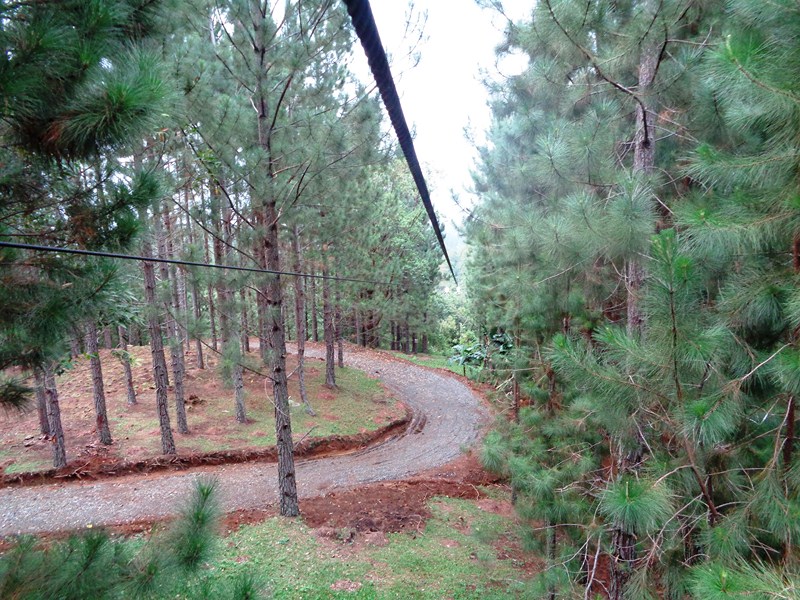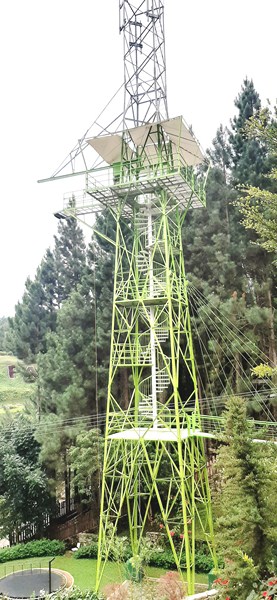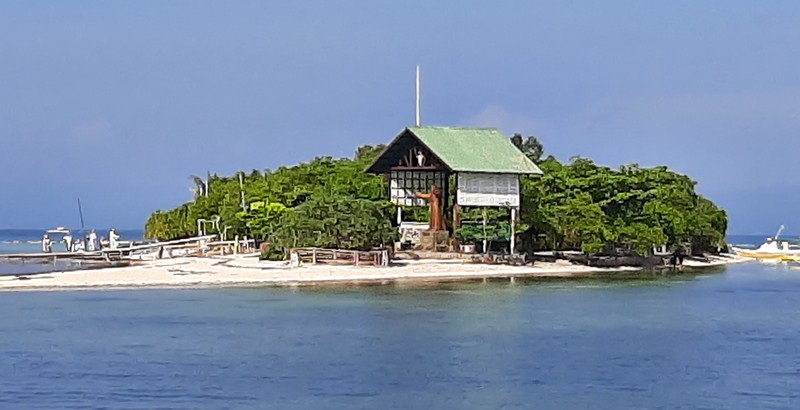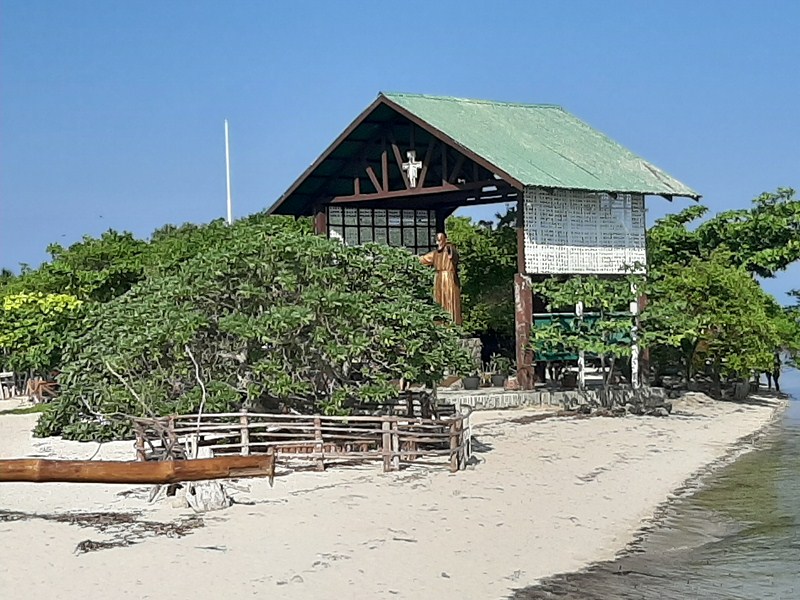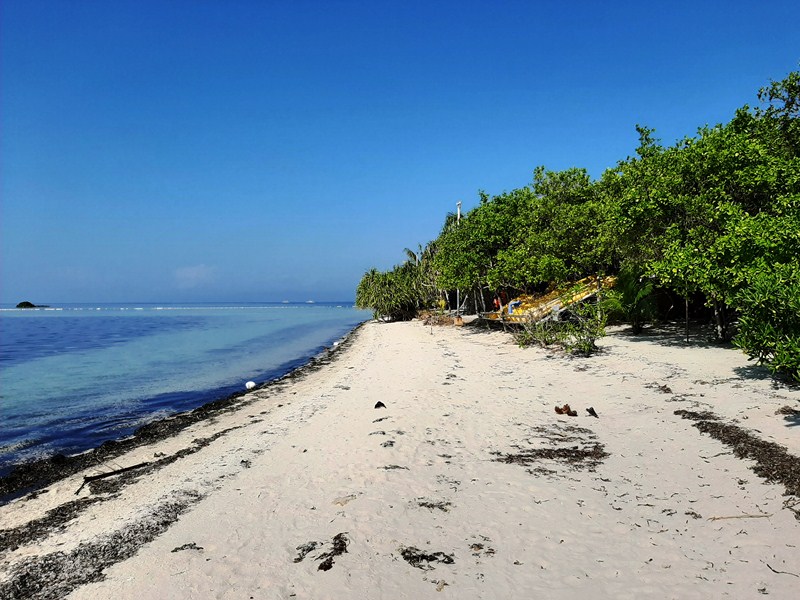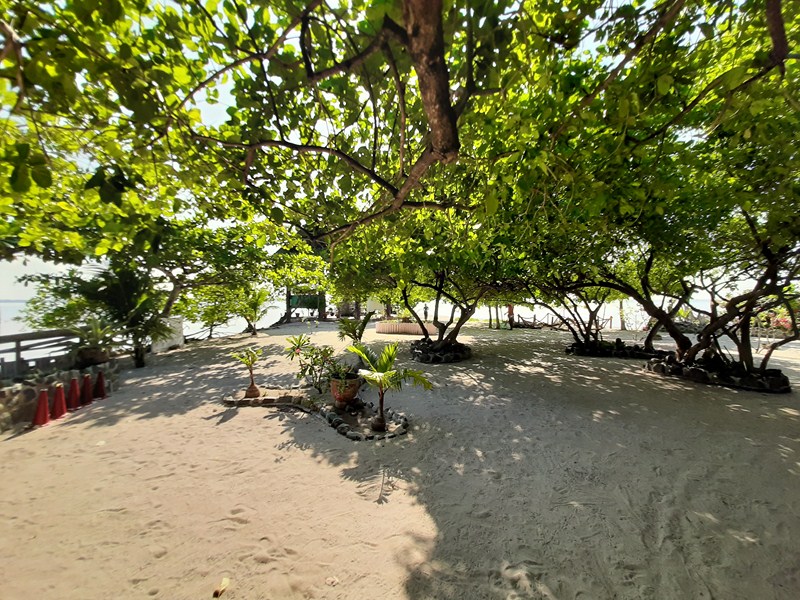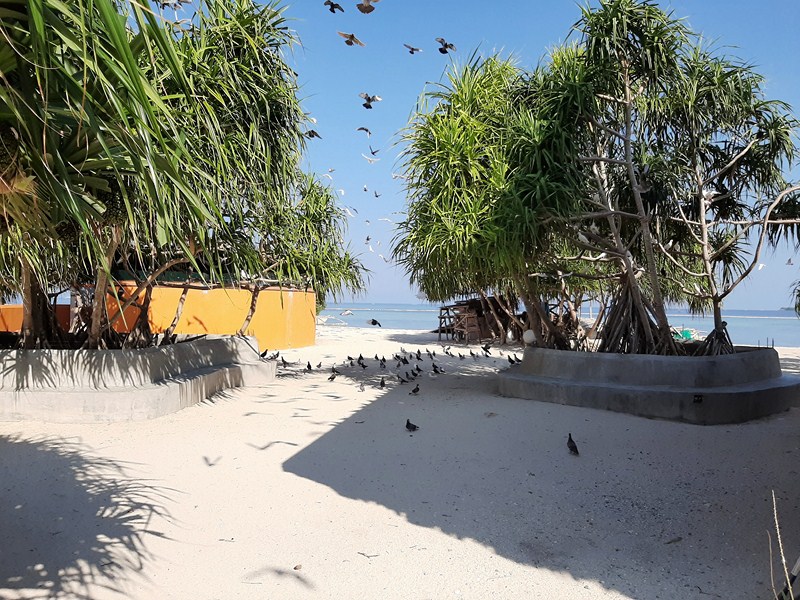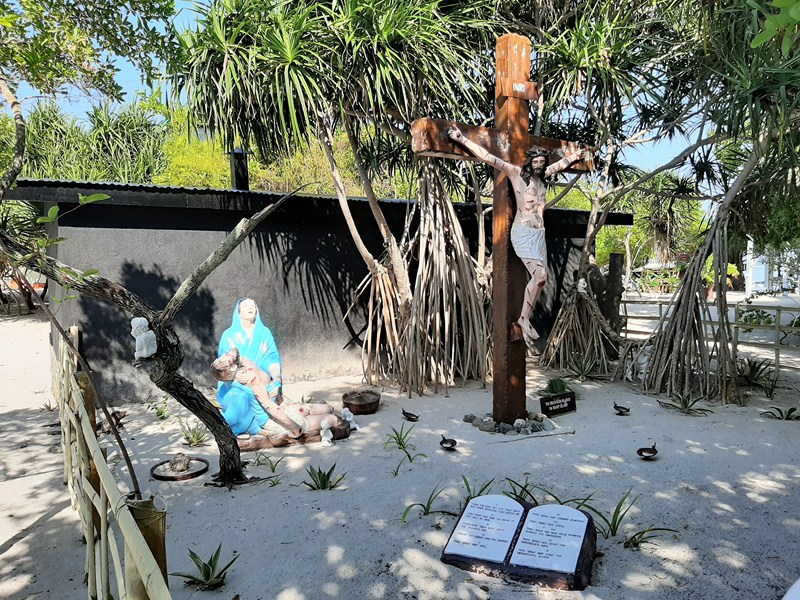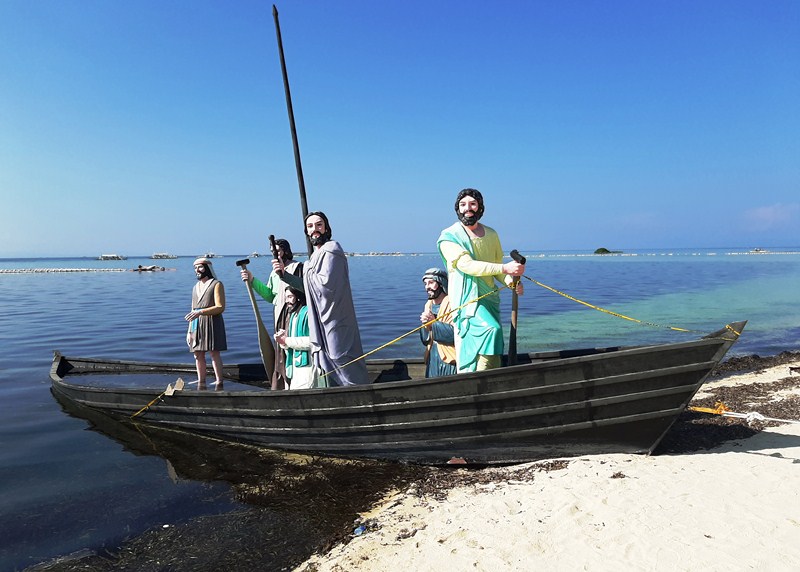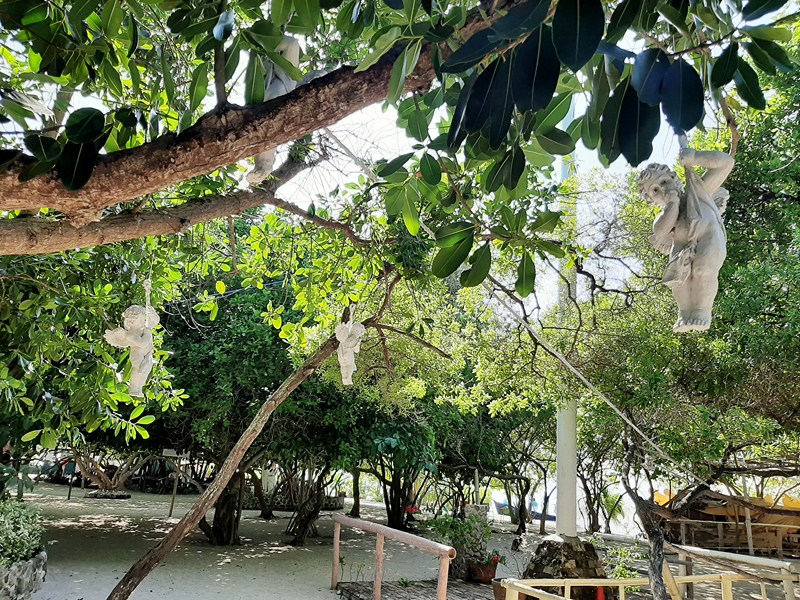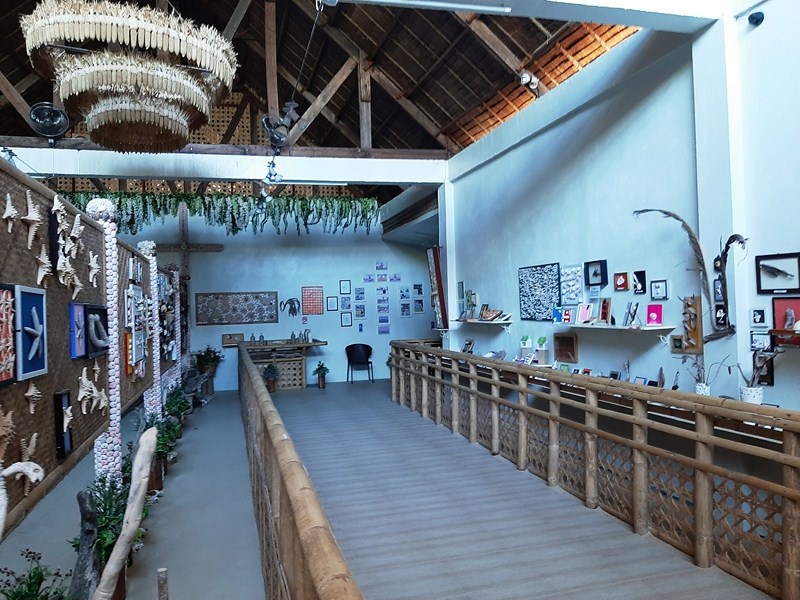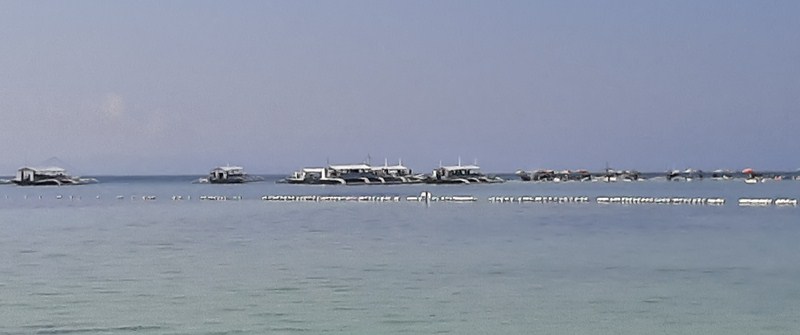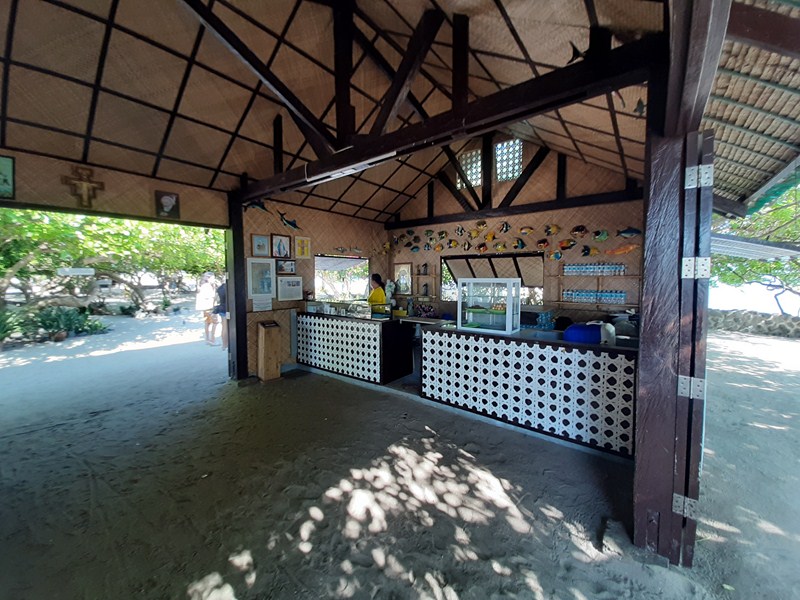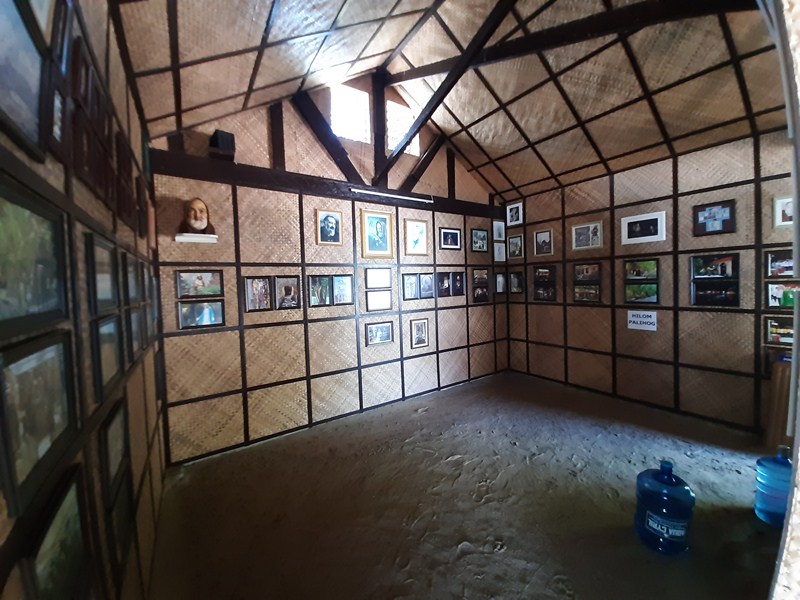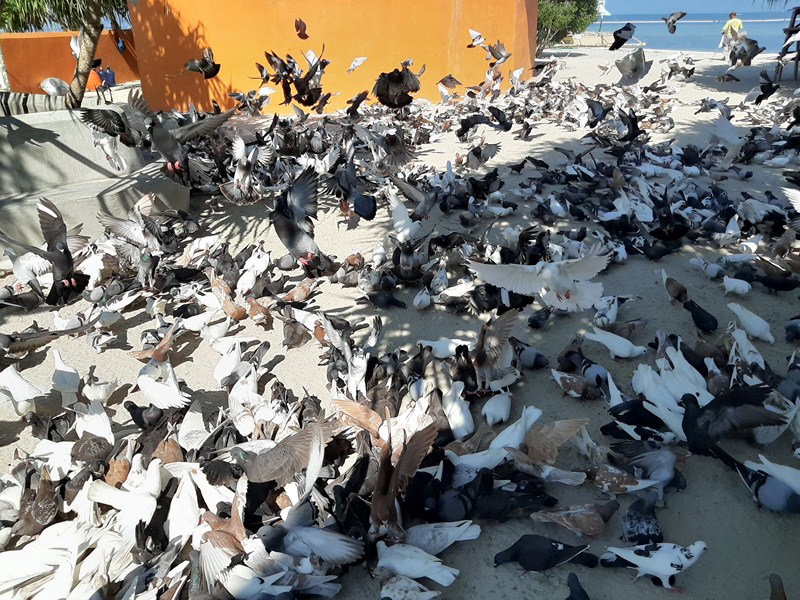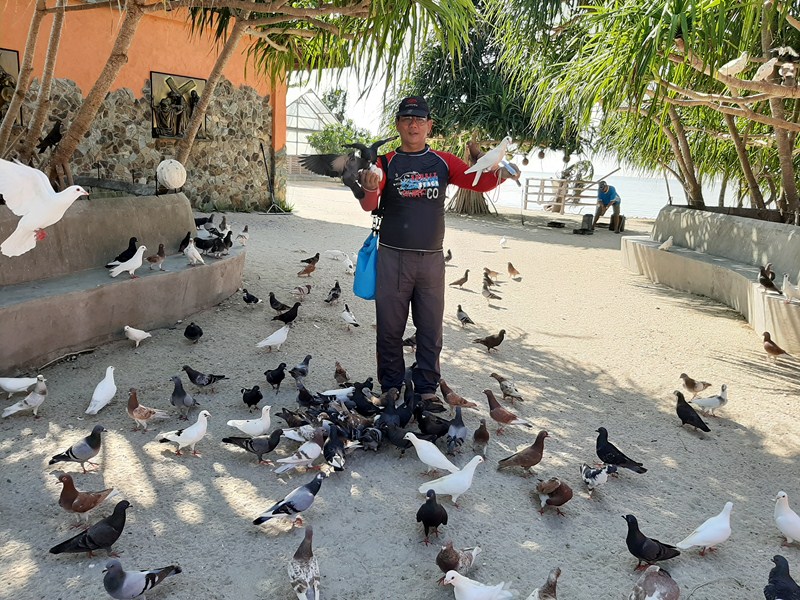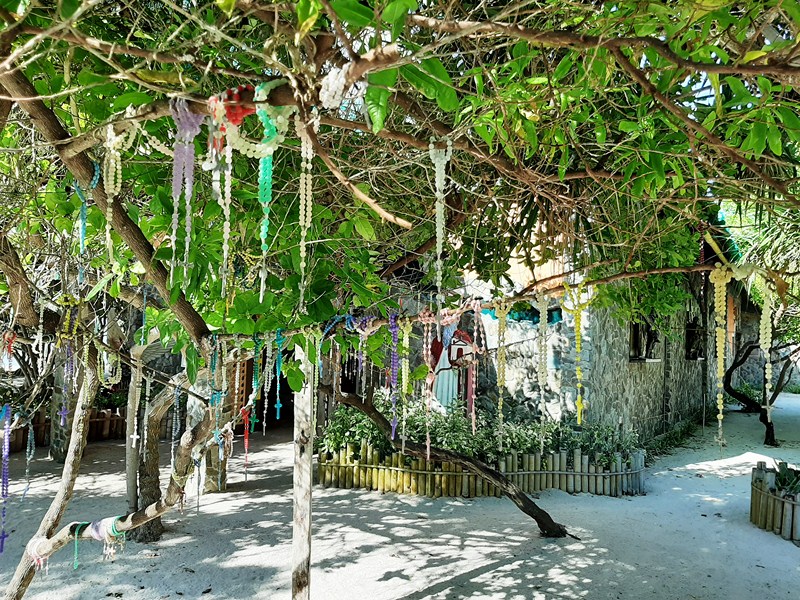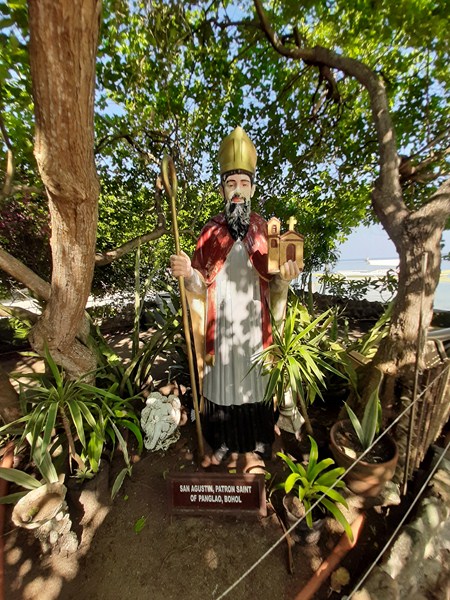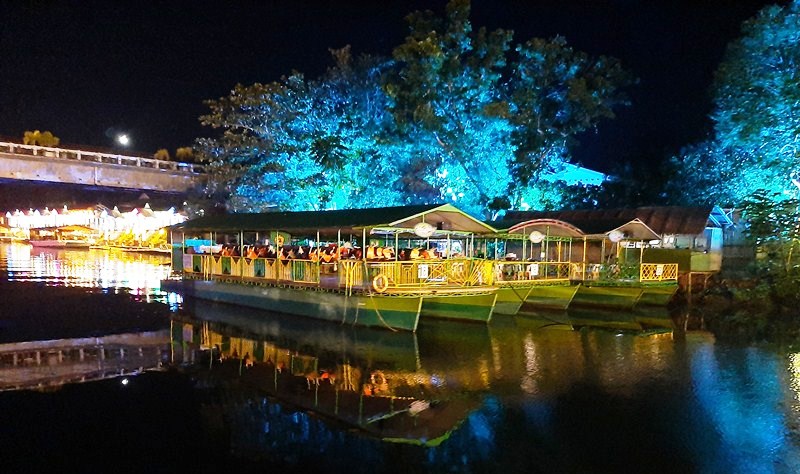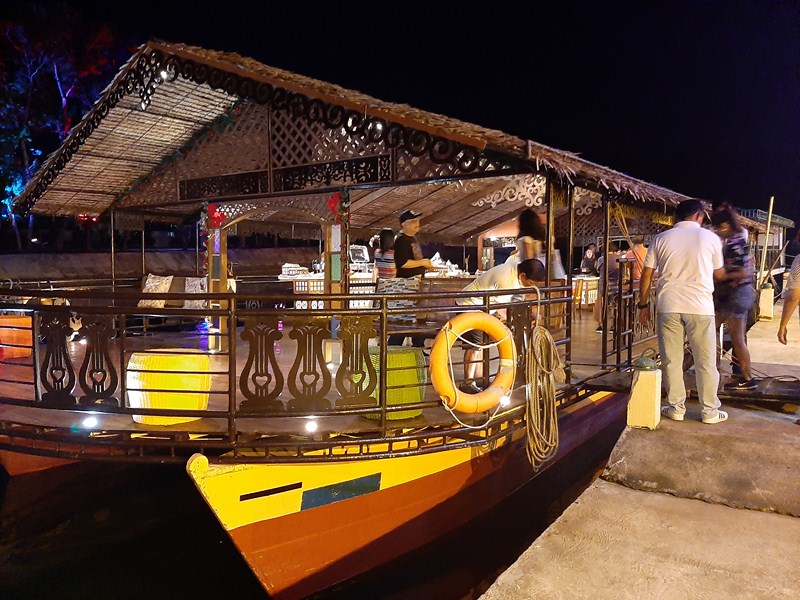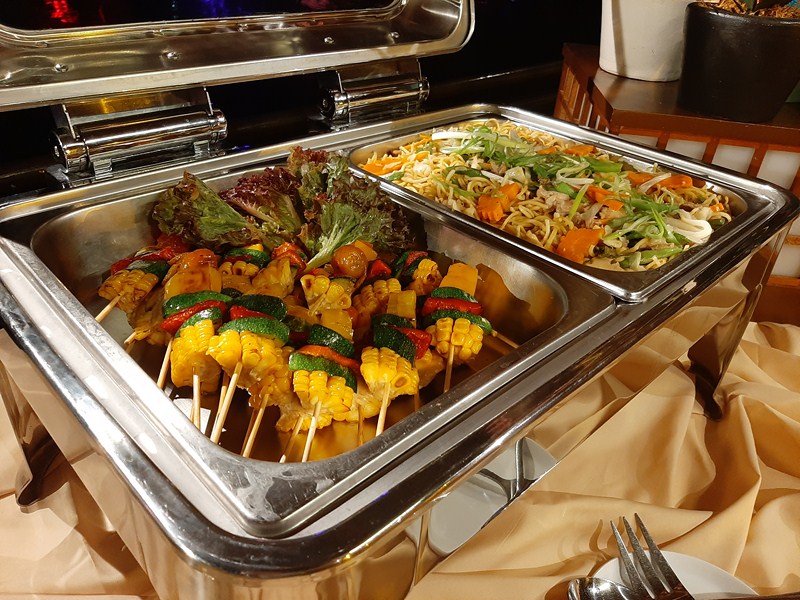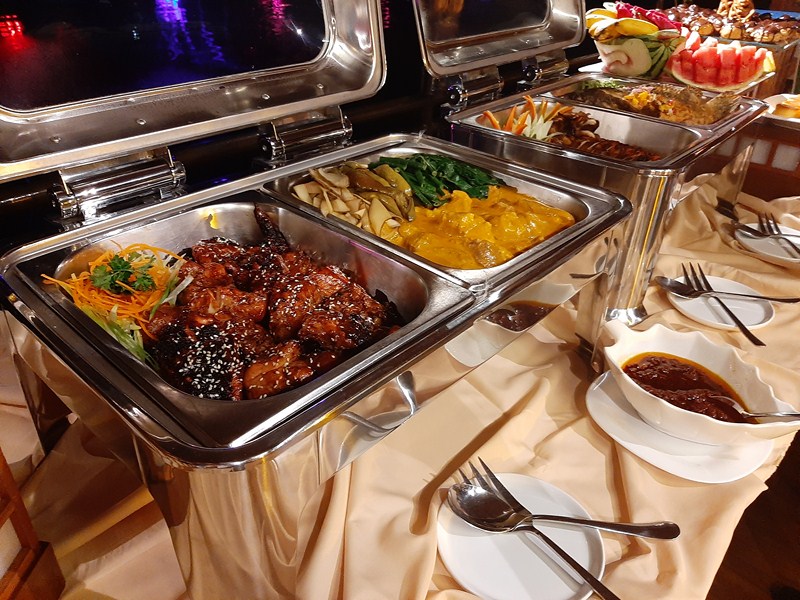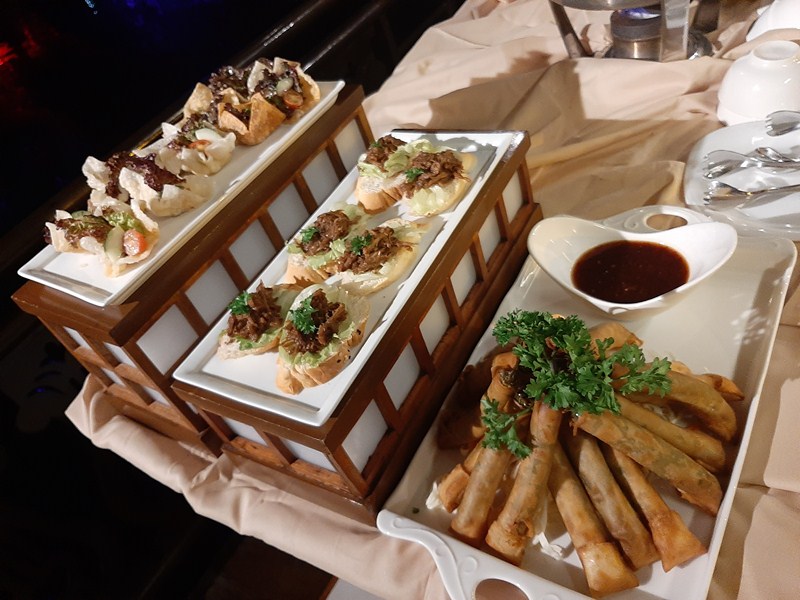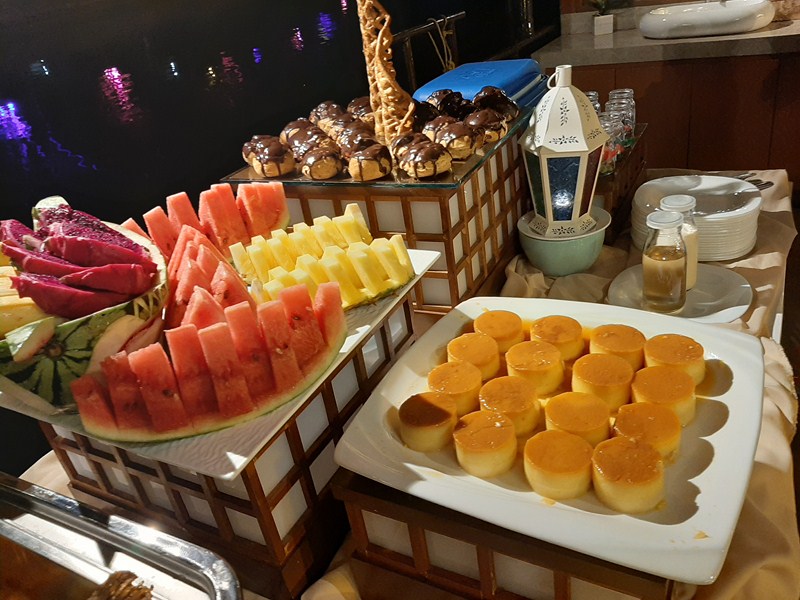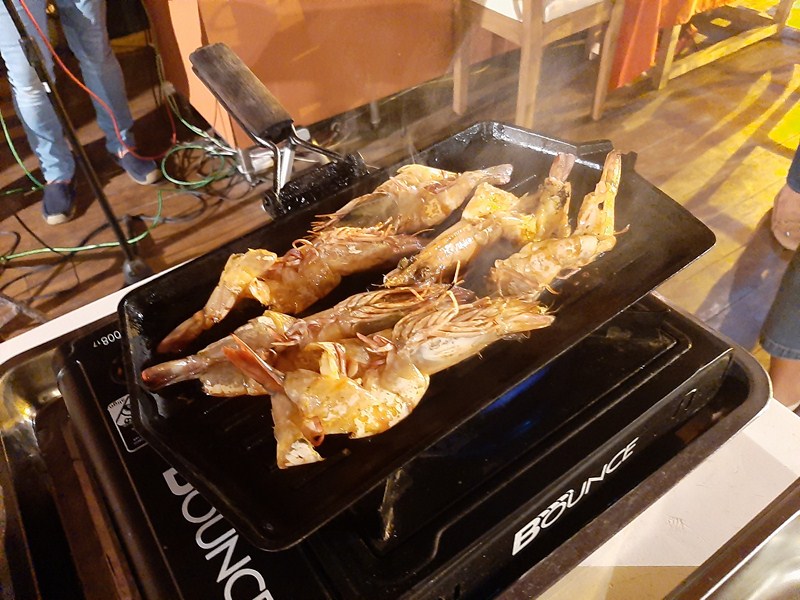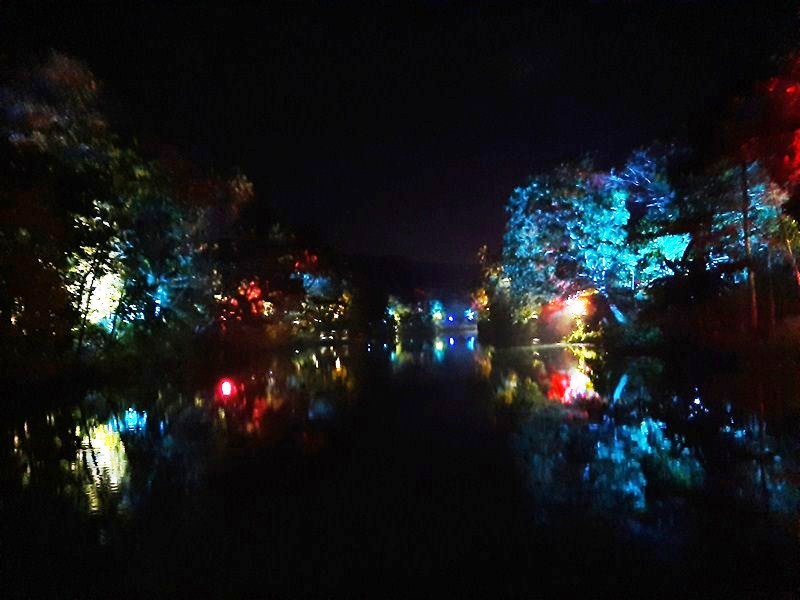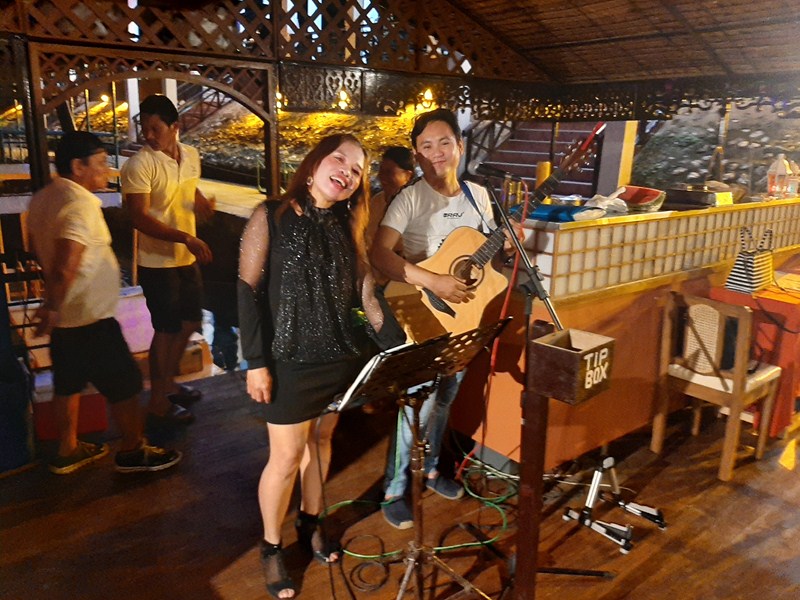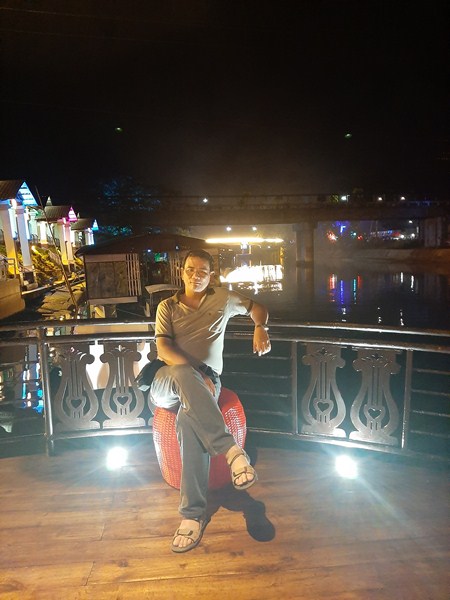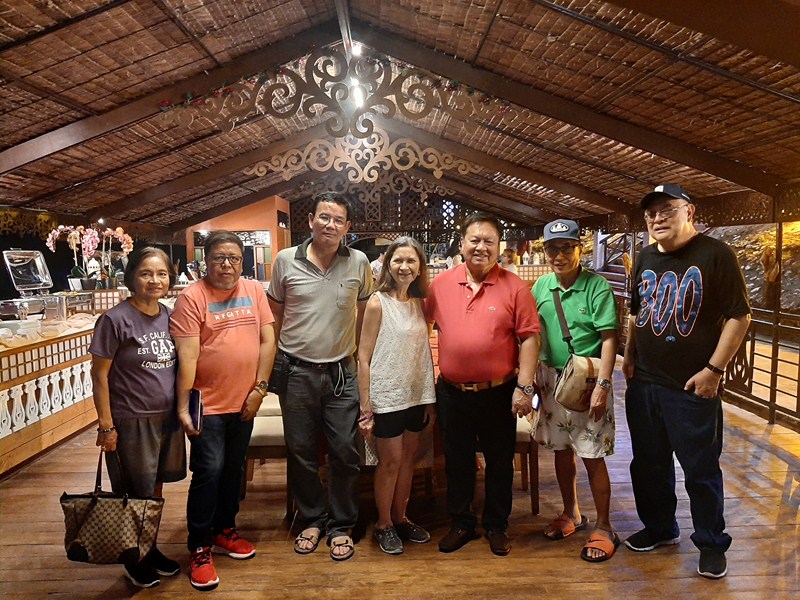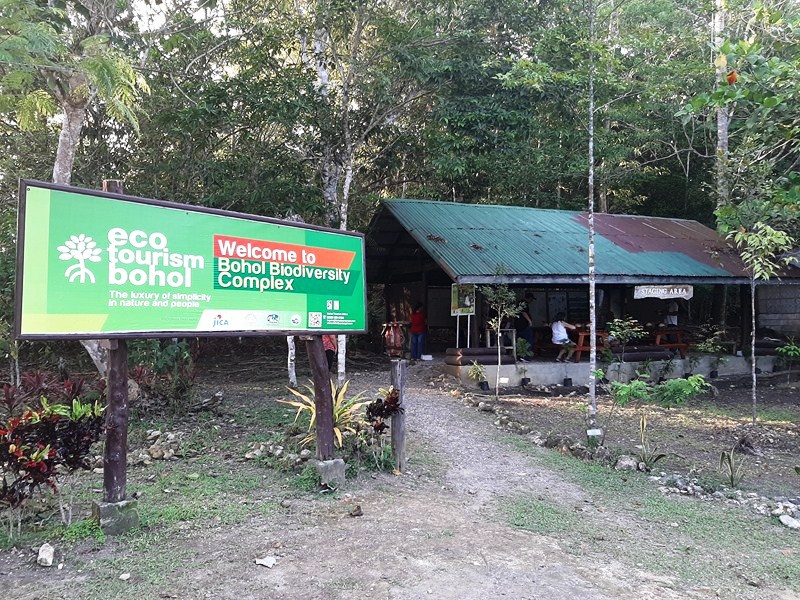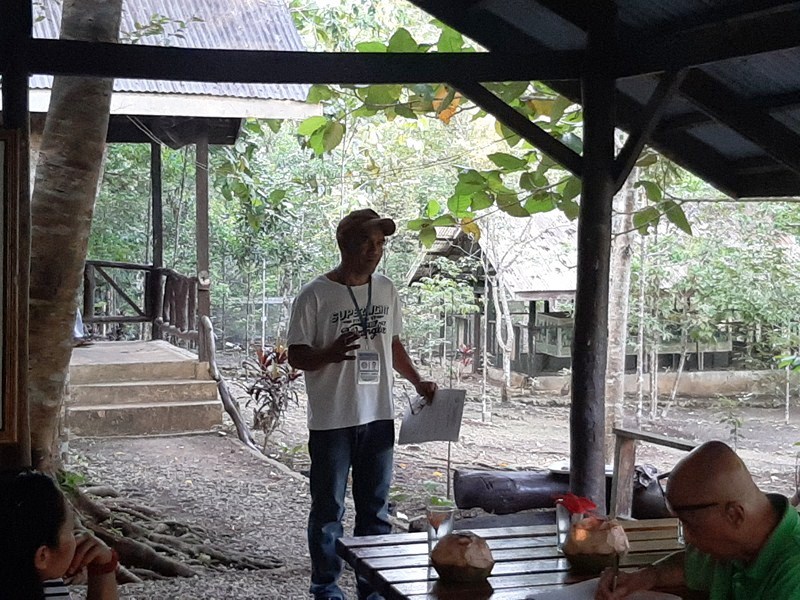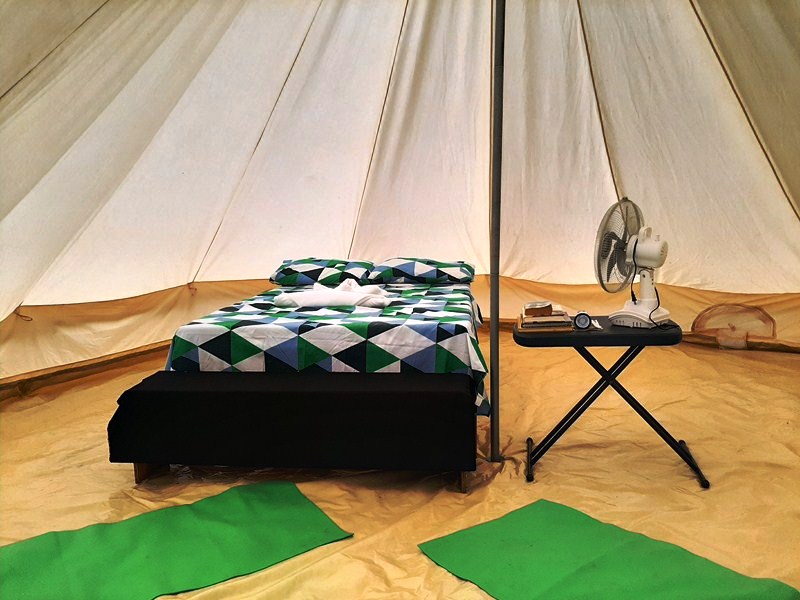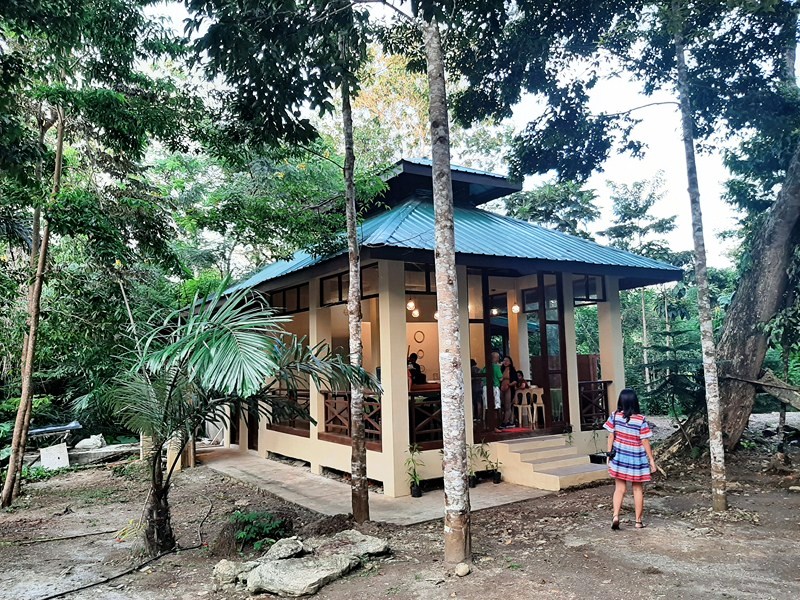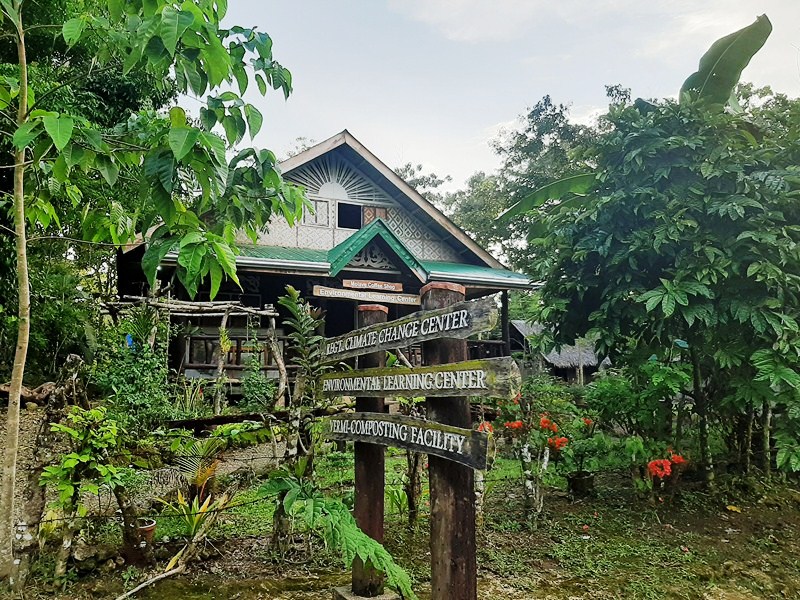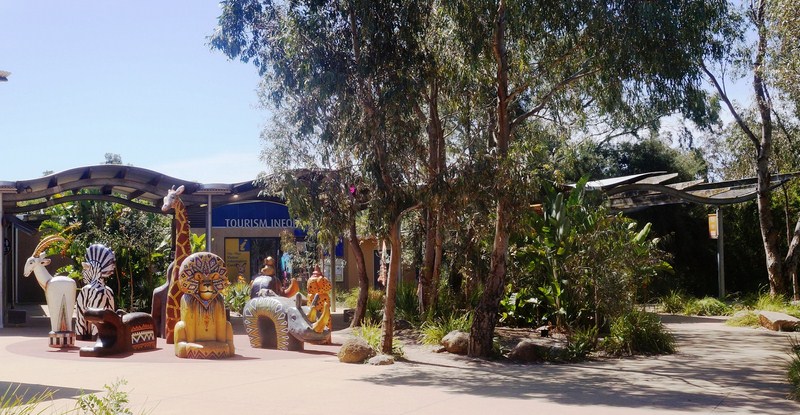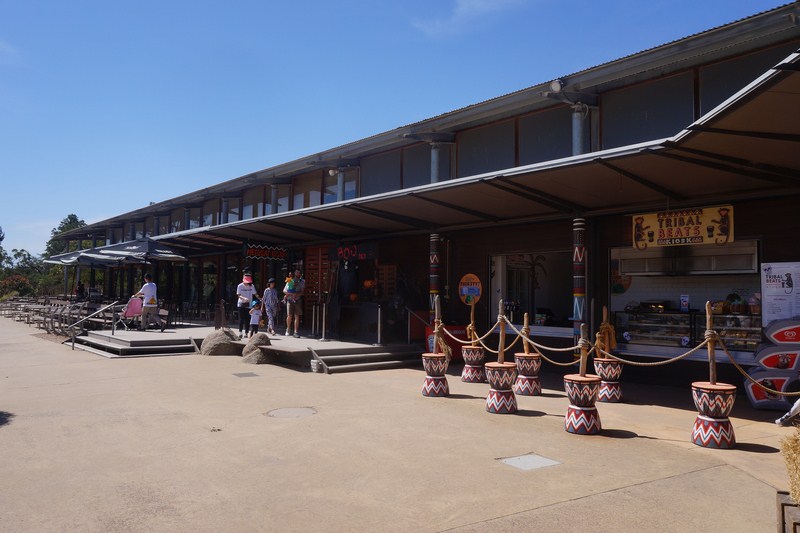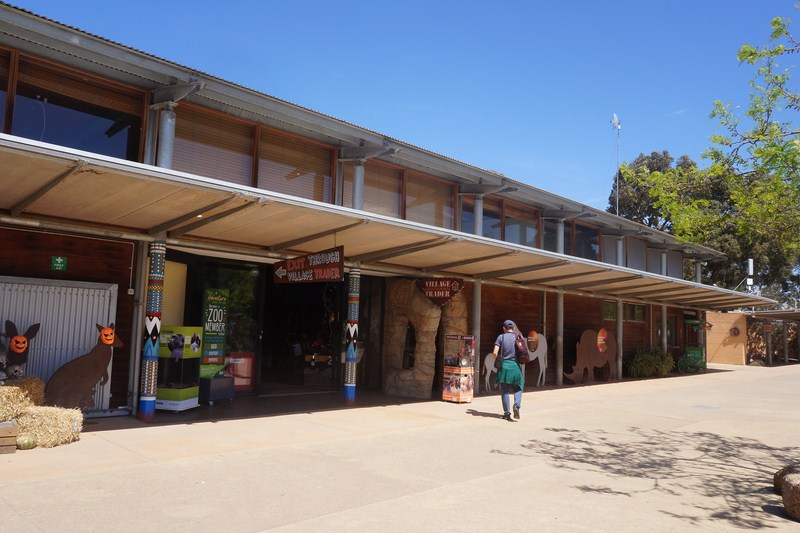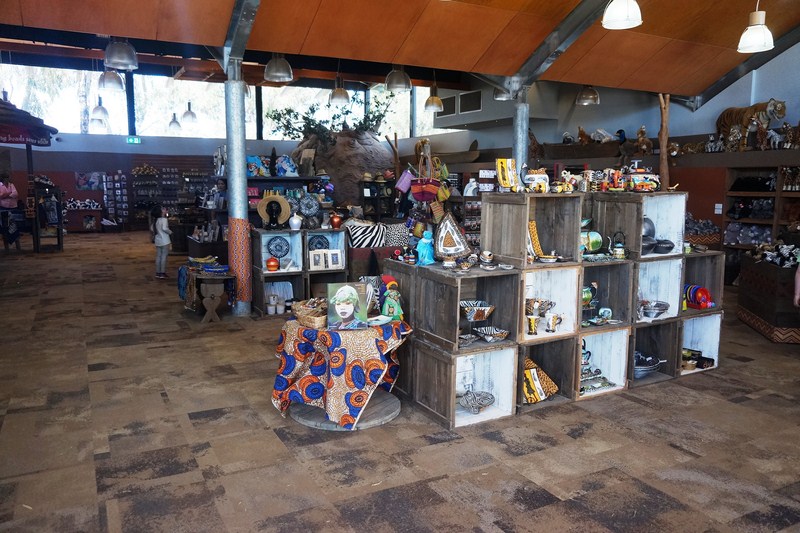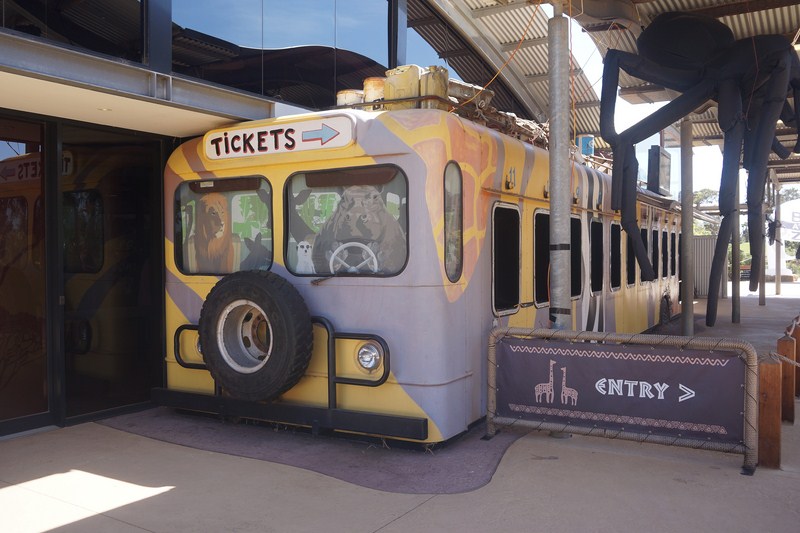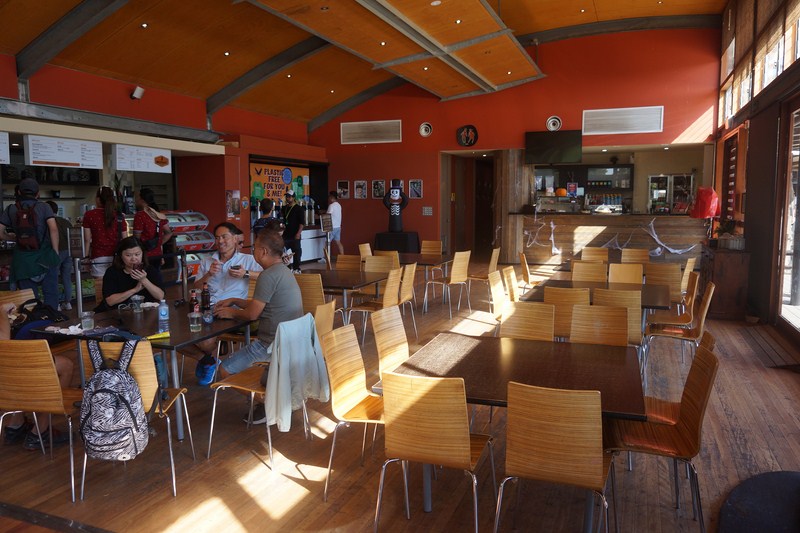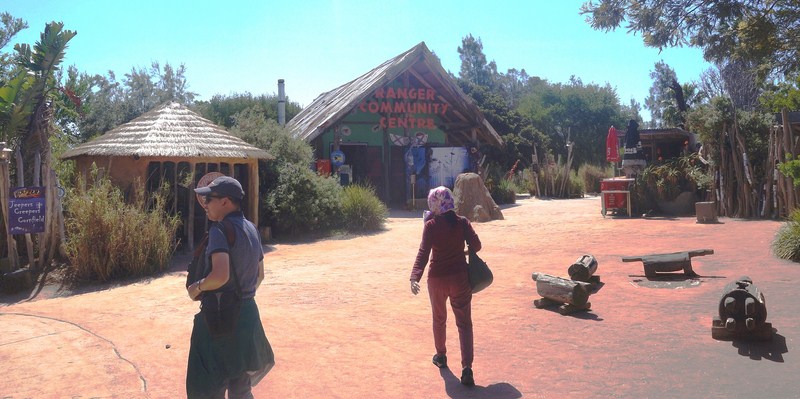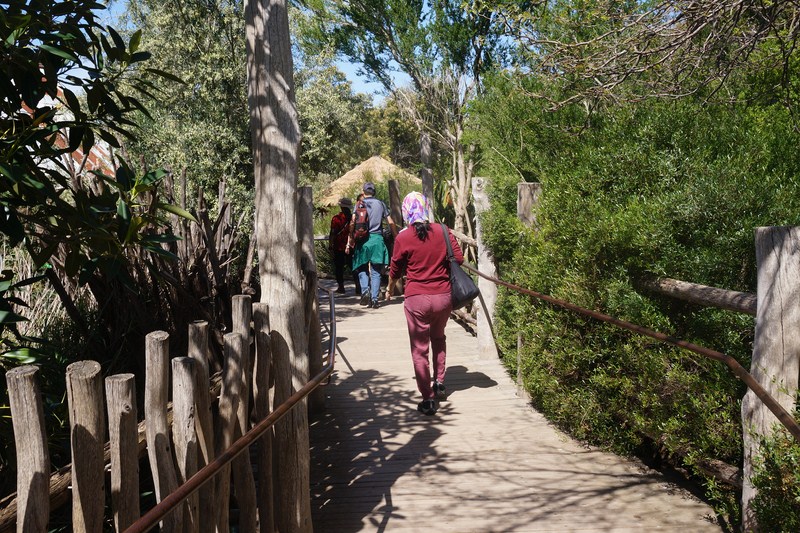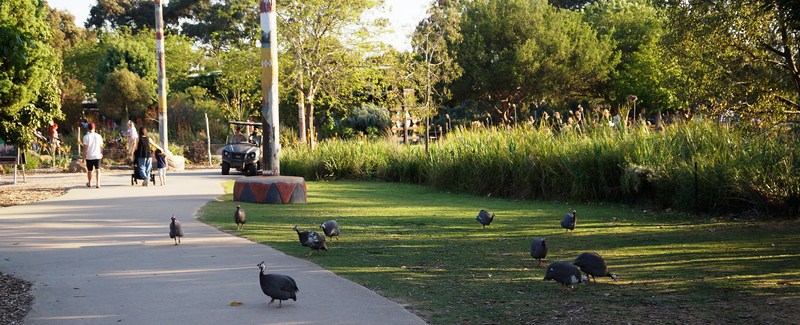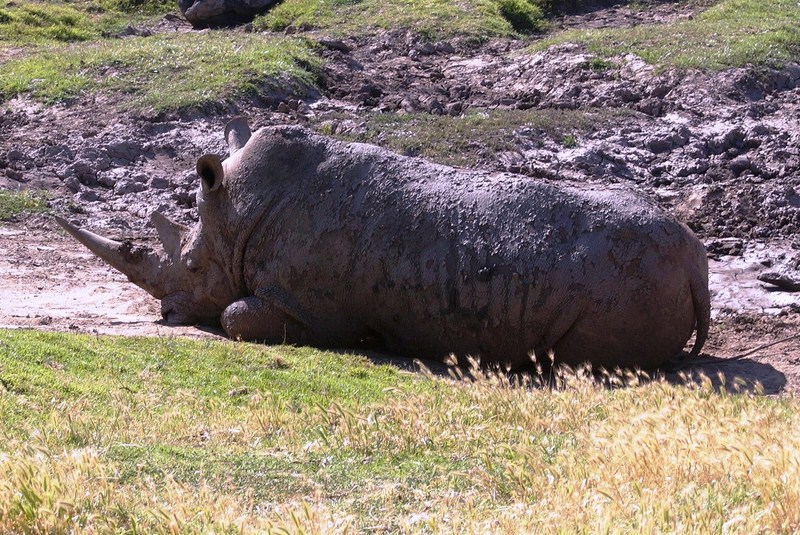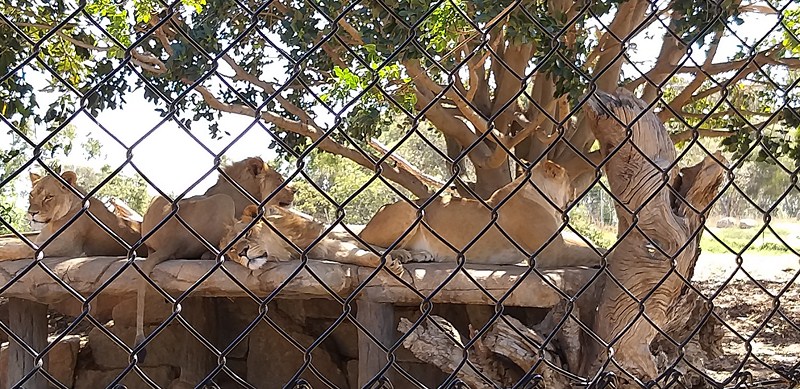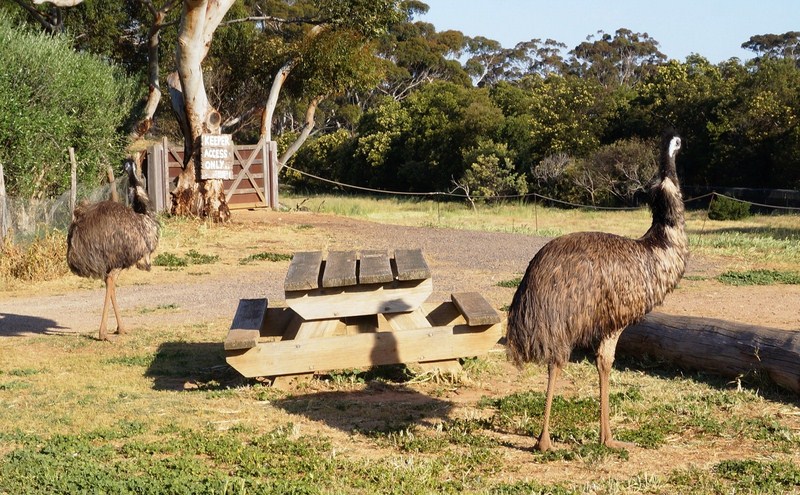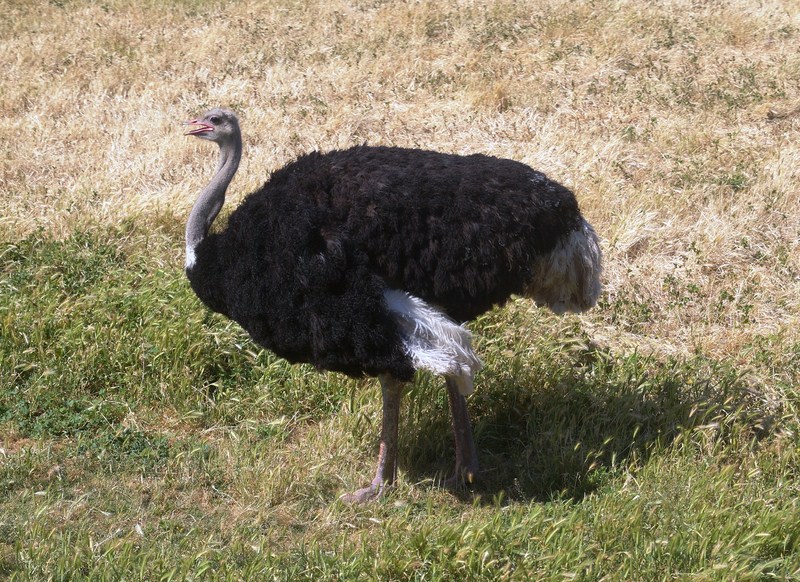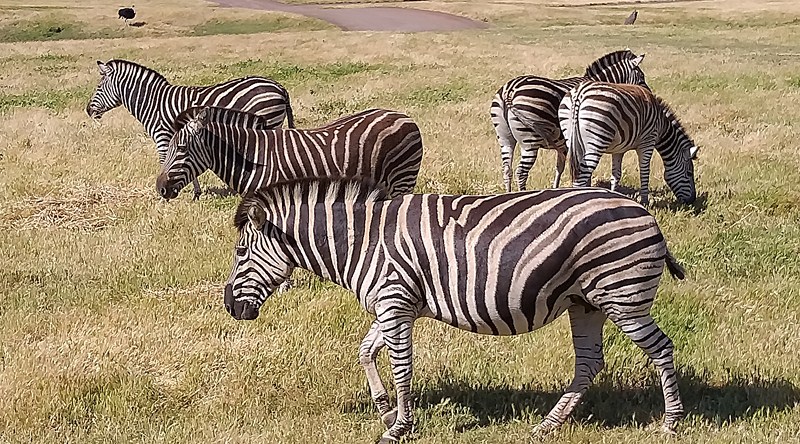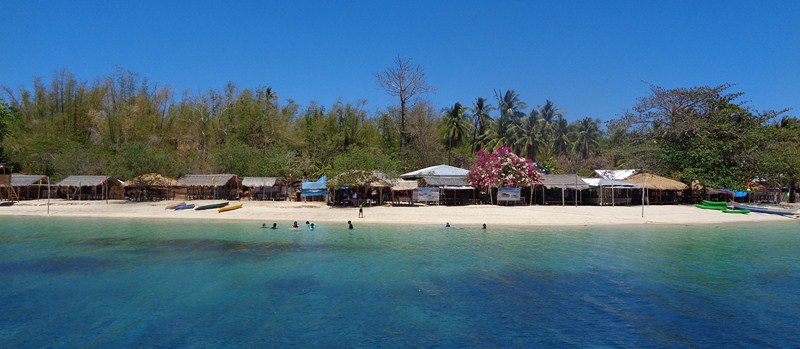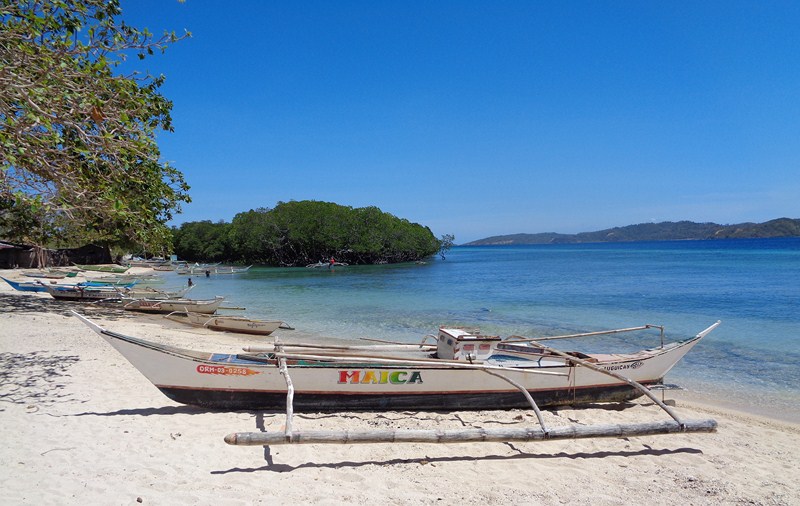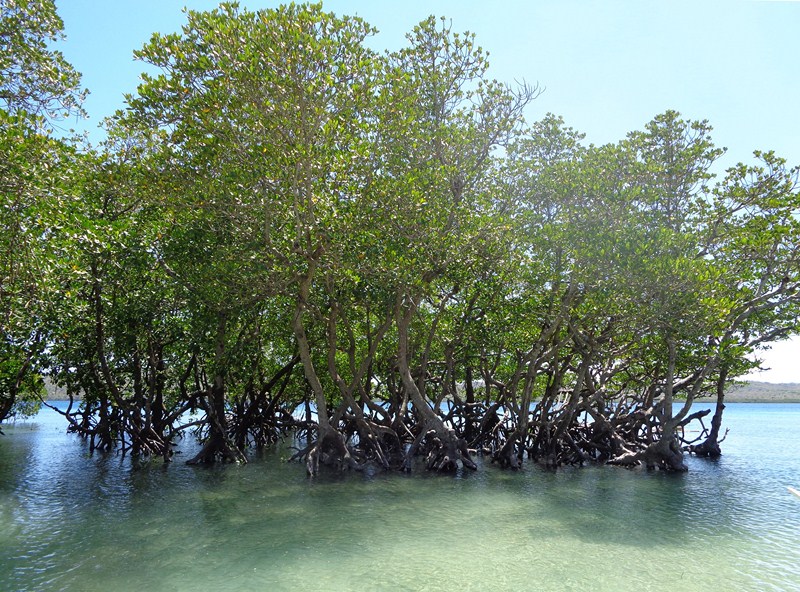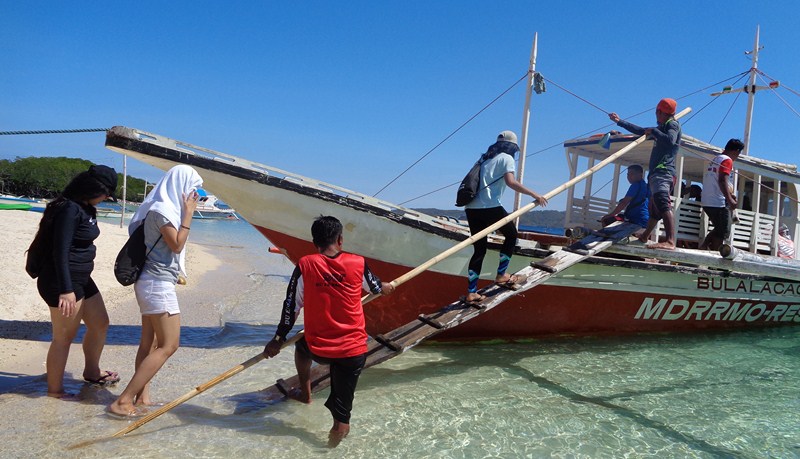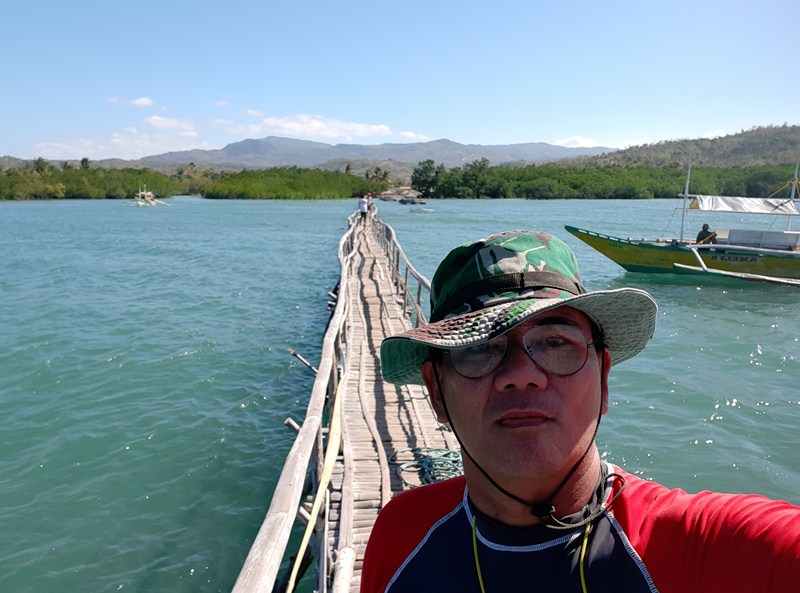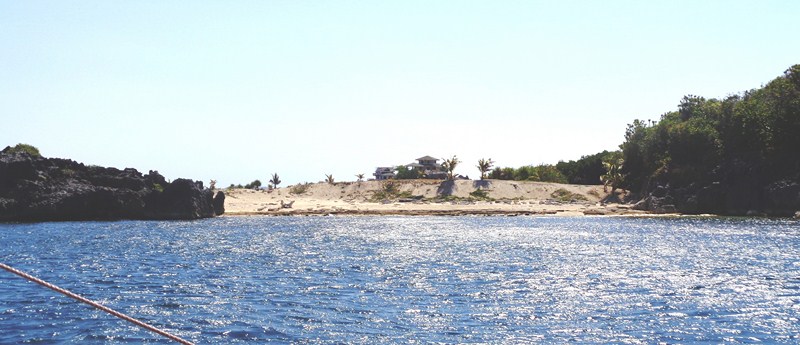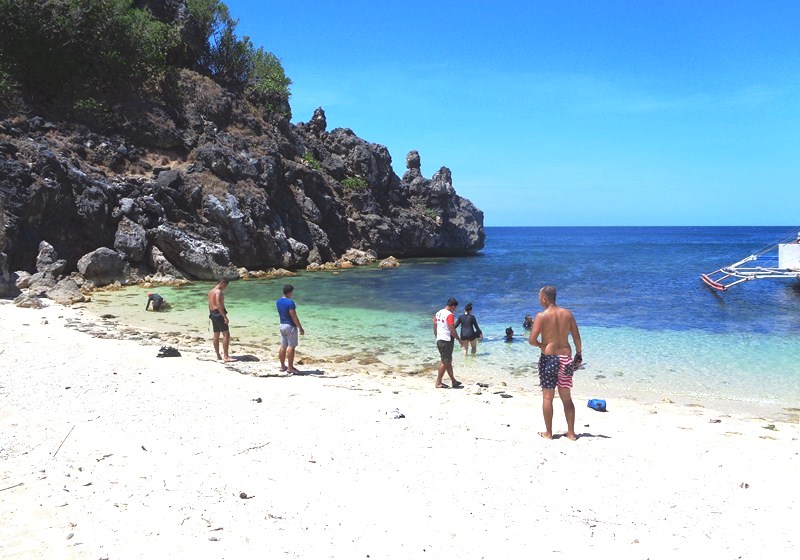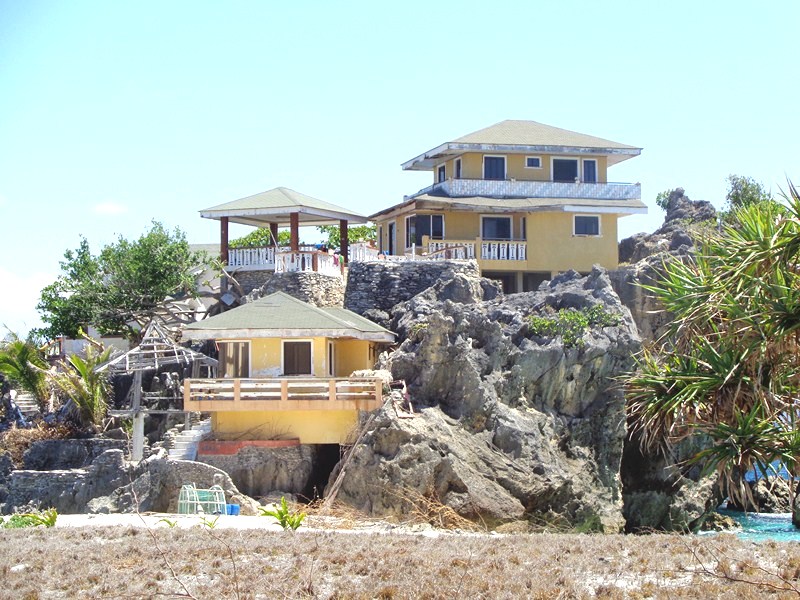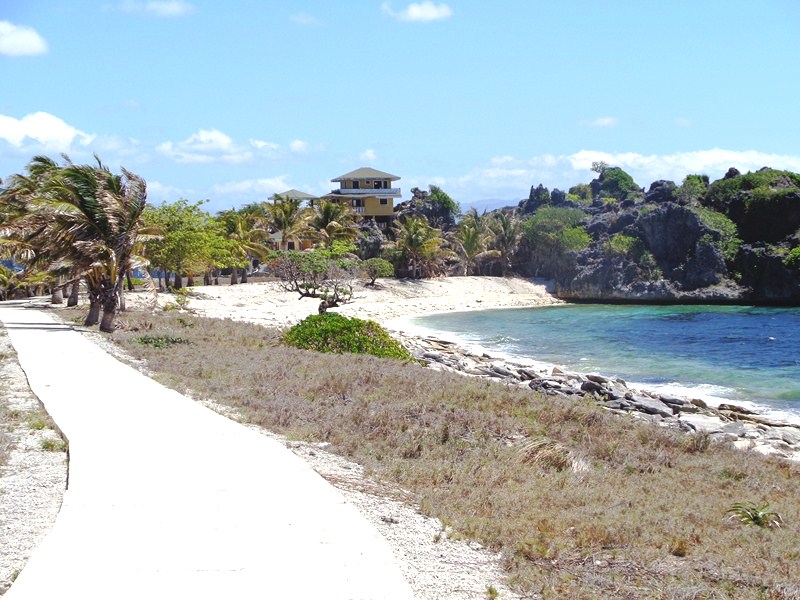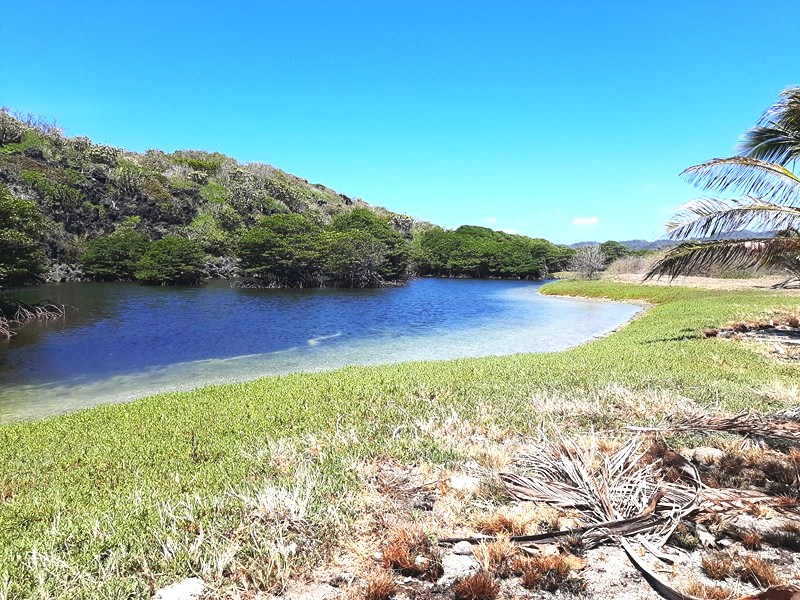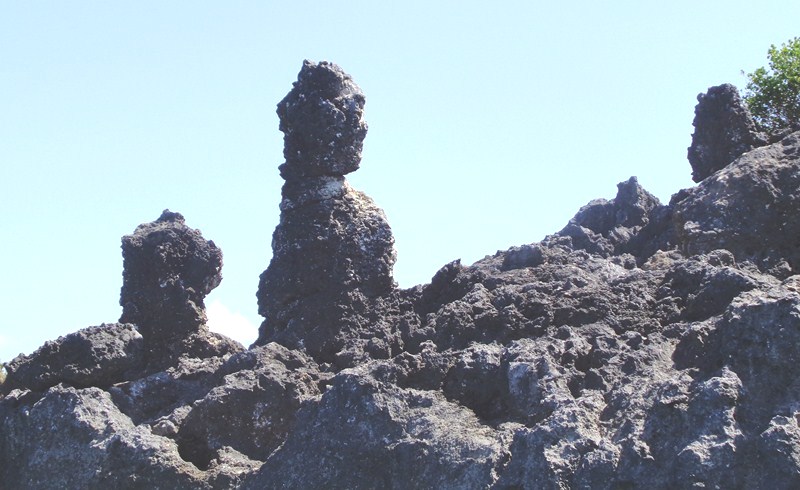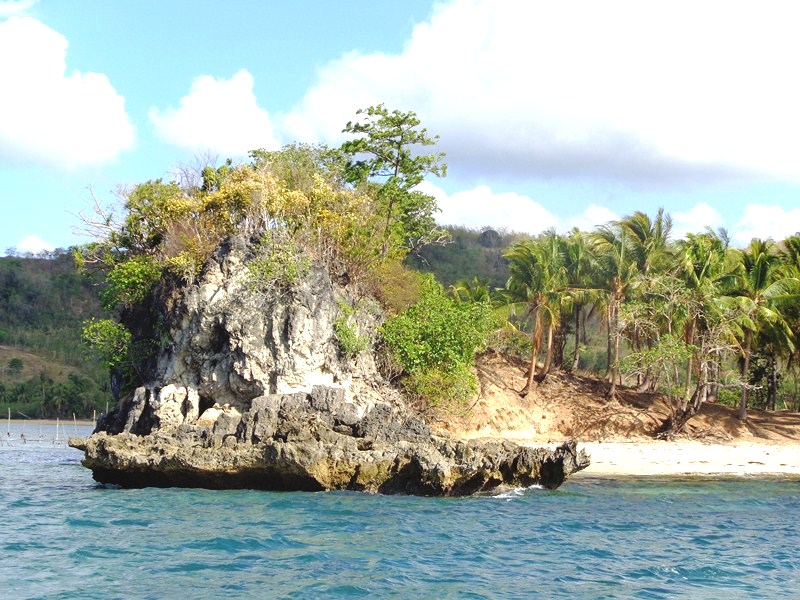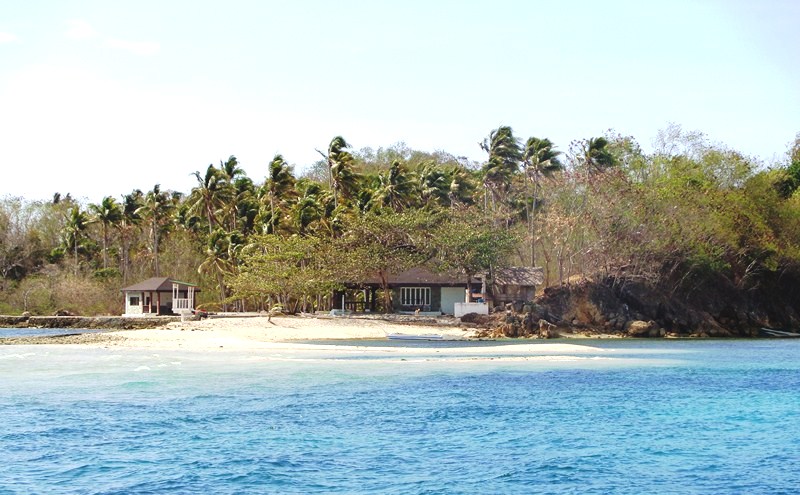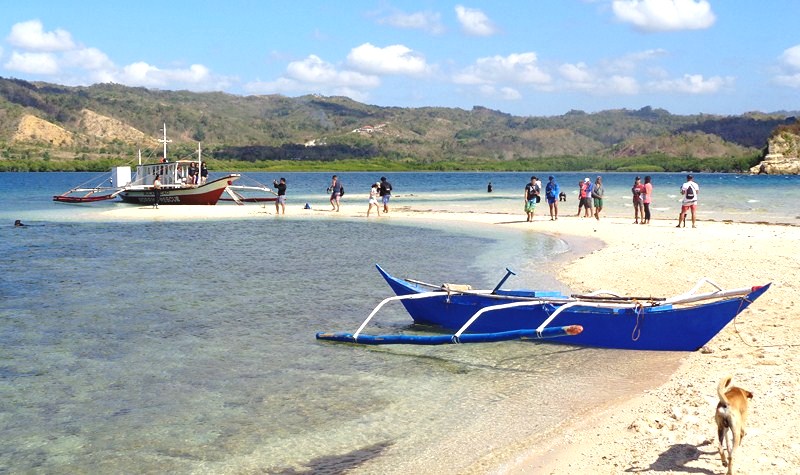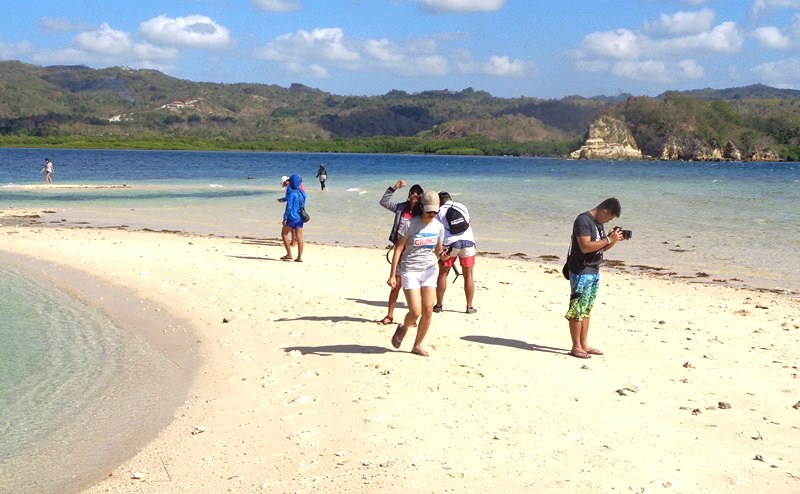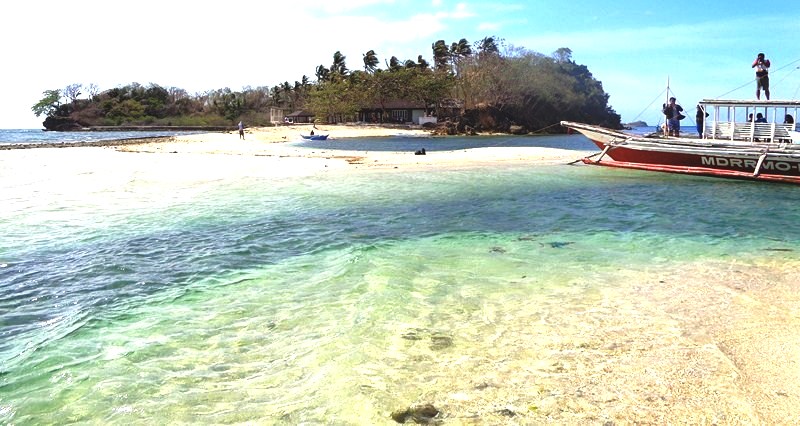On our second day at Fresno Agro Forestry and Eco Tourist Campsite, we woke up before 6 AM to witness an equally fiery sunrise. At the restaurant, we hadr a filling breakfast of hot coffee, corned beef omelet and garlic fried rice prepared by the staff from our leftover rice the night before.
Check out “Fresno Agro Forestry and Eco Tourist Campsite“
After breakfast, we met up with Mr. Edong Penamante, the katutubo head of the 200-strong Fresno Tour Guide Association (about 90% of which are also katutubo) who was to be our mandatory guide for our 5-hour tour of Camp A and Camp B.
After a preliminary briefing by Edong, we all went down Mount Kulis, via a cleared dirt trail (the sides of which have been leveled to accommodate more tents), to the giant Spider Web, a favorite of most trekkers which (just like Noah’s Ark), on weekends, has a long queue of visitors wanting to try it out and take Instagram-worthy shots.

The giant Spider Web. On weekends, it has a long queue of visitors wanting to try it out and take Instagram-worthy shots. As we visited on a week day, we only had to wait a little while for this previous group to finish. Their guide, high up on a perch,, directs his group to create star-like configurations before taking their photos.
We only had to wait a little while for a previous group to finish. Getting on board was tricky and we had to crawl to make it to the center of the “web” (made with nylon ropes). Once in place, Edong, high up on a perch, directed us to create star-like configurations before taking our photos.

Getting back to solid ground was difficult for us senior citizens. We had to crawl, Mon on his knees, me on my butt …..
At one side of the area are some 13 native-style huts, of different sizes, which are rented out. Nearby are some common public toilets.
It was uphill from thereon as we made our way up, via a steep and rocky trail, to Sambong Peak (629 MASL) or Heart Peak (named after the heart-shaped, flower-lined wood and bamboo backdrop where couples pose).
Located at the back of Mount Kulis, it was named after the generous number of native sambong plants (Blumea balsamifera) in the area.
There are also limestone karst formations on a cliff, perfect for Instagram shots.
From Sambong Peak, we next made a 30 to 45-minute hike, along a trail involving mountainous slopes, rocky and grassy areas, to Noah’s Ark.

Noah’s Ark is approached via a wooden bridge with bamboo railings. A sea of clouds sometimes envelopes the mountain and Noah’s Ark was designed as such to create the illusion that you are sailing over this sea of clouds. One of the visitors is posing atop a limestone karst formation beside the bridge.
This boat-shaped wooden structure, with bamboo outriggers, sits atop a limestone karst formation and is approached via a wooden bridge with bamboo railings.
A sea of clouds sometimes envelopes the mountain and Noah’s Ark was designed as such to create the illusion that you are sailing over this sea of clouds. Visitors also pose atop a limestone karst formation beside the bridge.
From Noah’s Ark, it was another 30-minute hike to the Registration Area were we had our lunch and rested awhile prior to our visit to Camp B.

Mon, Jandy and I on board our toro-toro, a makeshift 4×4 vehicle that would take us, on an exciting roller coaster ride, to the hanging bridge and the swimming pool. There were no seats, so we had to travel standing up and had to hang on tight as we went down the steep trail, ducking when we encountered tree branches…..
It is a steep uphill-downhill hike to get to the Hanging Bridge at Camp B but, luckily, there was an open top 4 x 4, driven by Mr. Stephen Fresno (a relative of campsite developer Reynaldo Fresno), that would take us there.
Still, it was a bumpy, roller coaster ride going to the Hanging Bridge, always on the lookout for tree branches that could knock us off our feet. For safety purposes, only a maximum of 7 persons are allowed on the bridge.
After crossing just halfway for our pose, we made our way back and hiked, along another dirt trail, to a riverside swimming pool created by a dam. Here, we rested our tired bodies as we immersed ourselves in its bracingly cold waters.
This capped our tour and we made our way back, this time uphill via the same 4 x 4, back to the Registration Area (where others alighted) and continued our way, again uphill, back to our campsite at Mount Kulis.
Fresno Agro Forestry and Eco Tourist Campsite: Sitio Maysawa Brgy. Laiban/Cuyambay, Tanay, 1980 Rizal. Mobile number: (0999) 553-4449 and (0946) 552-3659. E-mail: jimmydelasada24@gmail.com. Official website: Fresno Agro Forestry and Eco Tourist. Official Facebook page: Fresno Agro Forestry and Eco Tourist.
Admission: Php200 (day tour, 4AM – 3PM), Php300 (overnight, 4PM – 1PM). Tent Rental: Php500 (good for 2 persons), Php800 (good for 4 persons), Php200/tent pitching (bring your own tent). Guide Fee: Php500/5 pax (day tour), P1,250/5 pax (overnight). Note: Mandatory guide if you go on Noah’s Ark and Lion Falls House.
How to Get There: Via Cogeo, ride a jeepney (PhP25/pax) or van (Php35/pax) From Araneta Cubao (in front of Gateway Mall, along Aurora Blvd.), to Cogeo Gate 2. At the end of the City Market, there’s a jeepney terminal. Take a jeepney (Php48/pax) bound for Sampaloc and tell the driver to drop you off in Maysawa Circuit. Upon reaching Sitio Maysawa, ride a tricycle (Php150/4 pax) that will take you to Fresno Agro Forestry and Eco Tourist Campsite. Via Tanay, ride a jeepney or van going to Tanay town proper. From Tanay Public Market, ride a jeepney that will take you directly to Sitio Maysawa. Upon reaching Maysawa charter a tricycle that will take you to Fresno.













































